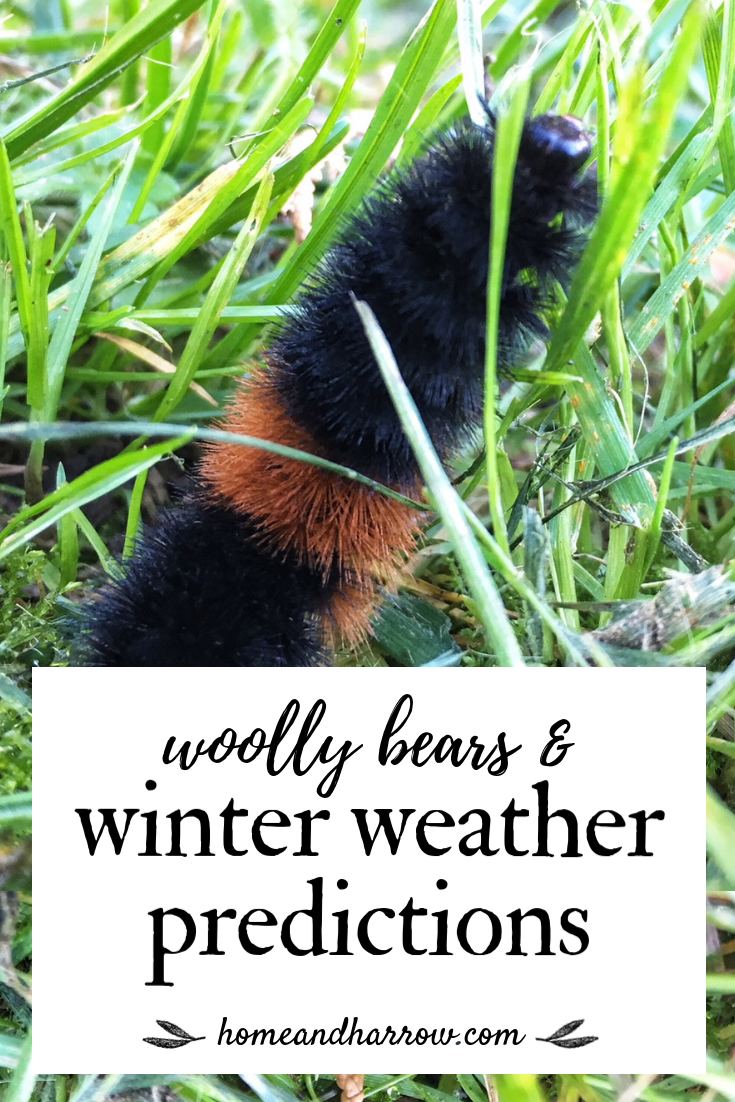As autumn leaves flutter to the ground, a small, unassuming creature emerges—one that many might overlook yet holds a profound connection to the cyclical rhythms of nature. The woolly bear caterpillar, the larval stage of the Isabella tiger moth, is not merely an enchanting sight but a remarkable harbinger of weather predictions. This unpretentious insect, clad in a coat of bristly hairs, embodies the essence of nature’s ability to communicate with us and serves as an enigmatic indicator of the impending winter climate. With each movement, the woolly bear whispers clues, urging us to decipher its signals and embrace the lessons of the natural world.
Woolly bears typically emerge in early fall, a time when temperatures dip and days shorten. They are known for their distinctive banding patterns, which vary in color from rich mahogany to inky black, depending on their species and local environmental conditions. Interestingly, the proportion of black to orange segments on their fuzzy bodies is more than a mere artistic flourish; it is an insidious indication of the severity of the forthcoming winter. The lore surrounding these crinkly creatures suggests that a caterpillar with a wider black band denotes a harsher winter, while one with a more pronounced orange band predicts a milder season.
But how exactly do these captivating critters forecast weather? The woolly bear’s survival depends largely on its ability to sense changes in temperature and other meteorological variables. As temperatures drop, the caterpillar enters a state of dormancy, utilizing its unique antifreeze proteins that allow it to withstand freezing temperatures. During this period, their pigmentation may change as well, indicating adaptations to the environmental stressors they encounter. It’s a sophisticated survival mechanism that underscores the intense relationship between the woolly bear and its surroundings.
The phenomenon of woolly bears predicting winter weather is not merely folklore but rather steeped in observational science. A plethora of anecdotal evidence supports these claims, suggesting that climate-conscious humans have long treated these diminutive seers with a sense of reverence. As time-honored customs fade, the woolly bear serves as a bridge to tradition, urging us not only to observe but also to appreciate the wisdom embedded in the natural observations passed down through generations.
The legends surrounding woolly bears have inspired various communities, and they’ve sparked a renewed interest in the natural world’s intricacies. Notably, in some regions, people have started to document these patterns, contributing to a nascent body of evidence that may one day corroborate or refute historical observations. This intersection of anecdote and empirical data encapsulates the essence of curiosity—the desire to learn from the earth beneath our feet, even when it comes in the form of a tiny caterpillar.
Woolly bears act as a metaphor for resilience. Just as these hardy creatures endure the harshness of winter, humans often face their adversities with tenacity. By studying the woolly bear, we glean not only insights into the meteorological mysteries of winter but also lessons about perseverance and adaptation. When the woolly bear emerges, devoid of fear, it bravely accepts the uncertainties of the cold months ahead. Its teachings extend beyond mere weather prediction; they remind us to embrace our own changing seasons with grace.
Local biodiversity, including woolly bears, reflects the broader ecological tapestry of our neighborhoods. Observing the behaviors and patterns of such endemic species cultivates a powerful sense of place. Schools and communities increasingly embrace initiatives that promote awareness of local fauna, showcasing the valuable roles they play in maintaining ecological equilibrium. By familiarizing ourselves with these oft-ignored inhabitants, we foster a cultural appreciation for the environment around us, paving the way for steadfast stewardship.
Nevertheless, as human-induced climate change alters landscapes and affects weather patterns, the ability of the woolly bear and other species to adapt remains uncertain. Shifts in temperature and habitat can jeopardize not only the woolly bear’ survival but also its reliability as a weather oracle. It calls for a collective responsibility to respect and preserve the delicate ecosystems we inhabit. Educating ourselves on the woolly bear’s role can inspire a commitment to sustainability, ensuring future generations continue to enjoy the rich tapestry of life thriving in their neighborhoods.
In closing, the woolly bear is far more than a simple creature of curiosity. It is a symbol of nature’s intricate wisdom and resilience, and a reminder of the beautiful symbiosis between the environment and its inhabitants. As we watch these hardy caterpillars parade through our neighborhoods, we are prompted to reflect on the lessons they impart—accepting change, embracing resilience, and fostering a deep connection to the natural world. So next autumn, take a moment to pause and observe these remarkable little creatures, and perhaps, they may guide you not just in understanding winter’s temperament but also in embracing life’s ever-shifting seasons.









Leave a Comment